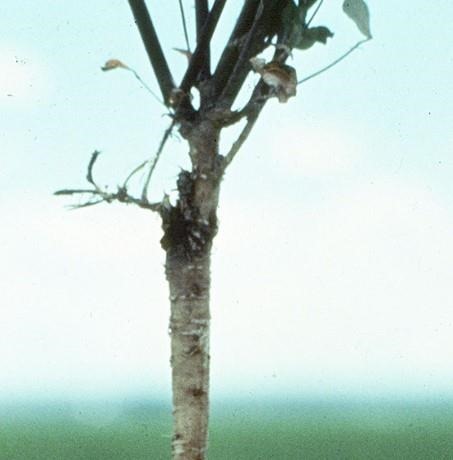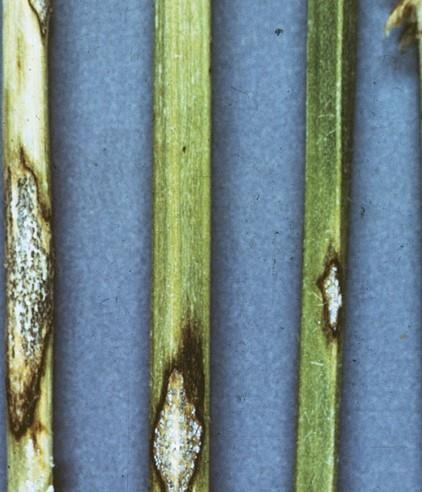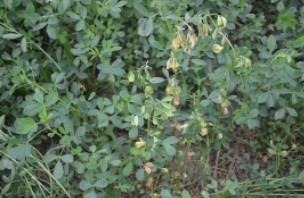By Melissa Bartels and Kyle Broderick et.al
Nebraska’s third-most valuable crop is alfalfa. As you think about selecting alfalfa varieties to plant this year, be sure to consider varieties available with greater resistance to diseases. Anthracnose and Phytophthora root rot are two of the most serious alfalfa diseases we are faced with here in the state of Nebraska.
Phytophthora root rot is the most common root rot of alfalfa in Nebraska. It is the major cause of seedling death but can affect all stages of growth. In wet conditions, this pathogen can cause seedling damping off in new stands, followed by plant death. This can occur in as little as a few days during periods with moderate temperatures and nearly saturated soils.
In established stands, Phytophthora root rot infects the taproot, resulting in up to a 50% yield loss and possible progressive decline over time (Figure 1). The damage to the taproot weakens the plant and increases the potential for winterkill. Symptoms are most severe in poorly drained areas and plant death normally occurs in an irregular pattern.

Figure 1. Alfalfa plant’s infected with Phytophthora root rot have a pencil shape to their taproots. The darkening of the taproot shows the rooting of the root.
Figure 2. Anthracnose lesions on stems are often straw-colored with a dark border in a diamond-shape.Anthracnose can appear anytime of the year on any age of alfalfa, but is most common after the second cutting and on stands greater than two years old. This disease primarily affects the stems and crowns of the alfalfa plant but can attack leaves. Lesions on stems are often diamond-shaped and straw-colored with a dark border (Figure 2). These lesions can girdle stems, resulting in the common “shepherd’s crook” symptoms (Figure 3). Anthracnose can spread rapidly and significantly lower alfalfa production in as little as one to two growing seasons.
This disease is most aggressive during warm, moist and higher rainfall periods during mid-summer and fall. In some cases, disease stress can reduce alfalfa’s ability to withstand cold temperatures, resulting in winterkill. Anthracnose spores can readily spread within the field via wind, rain and harvesting equipment.

Figure 3. Anthracnose lesions can girdle the stem, resulting in a “shepherd’s crook” appearance. (Photo by Stephen Wegulo)
Multiple races of anthracnose have been identified to cause economic damage to alfalfa in the Midwest. Races 1 and 2 are the most common. Race 5 is newly discovered, however its distribution across the Midwest is not well known.
With both Phytophthora root rot and anthracnose, symptoms are most devastating on susceptible alfalfa varieties. Therefore, proper seed selection will be the first line of defense for disease management. Select varieties of alfalfa seed that have at least a moderate to high resistance to anthracnose and Phytophthora root rot to effectively prevent yield and stand losses. Be sure to consult your seed representative to get the best protection for your alfalfa fields as new varieties come to the market.
Source : unl.edu